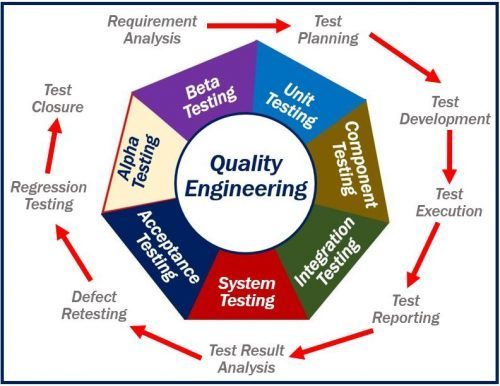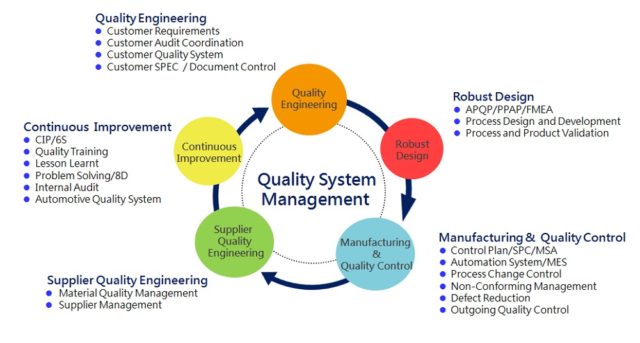Product Design Engineering on Quality Engineering-Perspectives
Product Design Engineering on Quality Engineering-Perspectives
Historically, and as Quality Engineering’s 2019 scholar works of Khristnamoorthi; Striving for quality, in the sense of seeking excellence in one’s activities, has always been deemed as part of mankind endeavor. History generates assorted examples of people achieving the highest levels of excellence, or quality, in their individual or communal pursuits. Quality charms to the mankind mind and generates a sense of satisfaction, which is why most of us enjoy listening to a good concert, watching a good play, observing a beautiful picture, or even riding in a well-built car.
Those satisfactions has undergone several cycles of testing sequences, as depicted in the following figure.

Figure Source: https://marketbusinessnews.com/financial-glossary/quality-engineering/
Article Source: What Is Quality Engineering? Definition And Examples
Furthermore, Khristnamoorthi elaborates that the mentioned quality has variety of meaning.
Some dictionary definitions of quality are: “an inherent or distinguishing characteristic,” “superiority of kind,” “degree or grade of excellence.” These definitions are too general and may not be helpful to define quality for a specific product.
Some have proposed more specific and practical definitions such as: “fitness for use,” “fitness for intended use,” “ability to satisfy given needs,” “conformance to specification,” and “meeting the needs of the customer both in performance and price.”
According to the ISO 9000 standards, quality is defined as the “degree to which a set of inherent characteristics fulfills requirements.”
The most quoted definition for quality is that by Garvin (1984). According to him, quality has several dimensions:
- Performance—the product’s ability to do the work it is supposed to do.
- Features—things that add to convenience and comfort.
- Reliability—the ability to perform without failure over time.
- Conformance—the degree to which the product meets codes of a state or a community.
- Durability—the length of time the product will last until it is discarded.
- Serviceability—the ability for making repairs easily, quickly, and at a reasonable cost.
- Aesthetics—sense appeal, such as color, sound, feel, and comfort.
- Perceived quality—the impression the product creates in the customer’s mind.
The above dimensions of quality are further elaborated in the bigger picture of Quality Engineering within Quality System Management.

Figure Source: http://www.statschippac.com.tw/html/about/quality-system-en.html
Article Source: Quality System Management
To illustrate furthermore, the following video enhances the understanding of Quality Engineering and its applications:
Quality Engineering & Management | TUMx on edX
Learn What the 7 Quality Control Tools Are in 8 Minutes
https://www.youtube.com/watch?v=LdhC4ziAhgY
Compiled by
Dr. Khristian Edi Nugroho Soebandrija, BSIE, MM.
Binus Aso School of Engineering, BINUS University.
